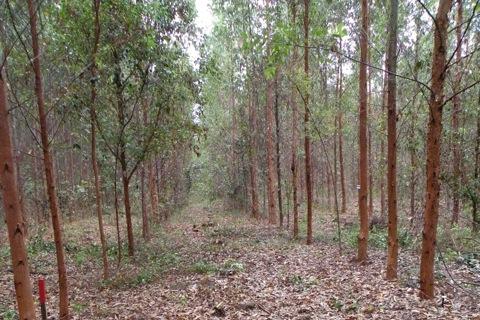The Alert against the Green Desert Movement is a broad network of opposition to the expansion of large scale eucalyptus tree plantations in the region which covers the States of Minas Gerais, Espirito Santo, Bahia and Rio de Janeiro and Rio Grande do Sul. Its existence and struggles arose from the proven social and environmental impacts of these plantations, some of which presently enjoy FSC certification.
Other information
In 1999, the FACE Forestación del Ecuador S.A. programme, known as PROFAFOR, hired the Swiss certification firm SGS-Société Générale de Surveillance to assess the forestry management of 20,000 hectares of its monoculture tree plantations in the Ecuadorian Andes.
In South Africa, a thorough research carried out by John Blessing Karumbidza --“A Study of the Social and Economic Impacts of Industrial Tree Plantations in the KwaZulu-Natal Province of South Africa”, available at http://www.wrm.org.uy/countries/SouthAfrica/book.pdf -- has identified a host of damaging economic, social and environmental impacts of monoculture tree plantations affecting local communities, water resources and ecosystems.
About 9% of Swaziland is now under timber plantations (eucalyptus, pine and acacia). In December 2004 Wally Menne, a member of the South African Timberwatch Coalition made public his research: “Timber Plantations in Swaziland: An investigation into the environmental and social impacts of large-scale timber plantations in Swaziland” (available at http://www.wrm.org.uy/countries/Swaziland/Plantations.pdf ).
In 1987 legislation was adopted that implied the promotion – by means of tax exemptions and subsidies – of large-scale monoculture alien tree plantations (mainly eucalyptus and pine) for export. It is thus that the country up till then based on agriculture and stock raising, started to convert part of its fertile grasslands into “green deserts” which presently cover over 700,000 hectares.
By the Alert Against The Green Desert Movement/Brazil
The harshness of capital against life but Aracruz Celulose lost the FSC-certificate!
Paulo Henrique de Oliveira, a Tupinikim leader of Caieiras Velhas and Coordinator of the Articulação de Povos e Organizações Indígenas do Nordeste, Minas Gerais e Espírito Santo - APOINME (Articulation of Indigenous People and Organizations from the Northeast, Minas Gerais and Espírito Santo), and Antônio Carvalho, a Guarani chief, travelled to Europe in April/May 2006, to publicise their struggle to demarcate Tupinikim and Guarani lands in Espírito Santo (see WRM Bulletins Nº 94, 96, 102, 103) .
The social and environmental impacts of monoculture eucalyptus plantations have been well documented in many countries. However, the gender dimension has usually been overlooked, thus hiding the differentiated impacts they have on women. The following quotes from a research carried out in Brazil on Aracruz Cellulose’ plantations and pulp mill operation are therefore very useful to shed some light on the issue and to encourage other people to look further into these less well-known impacts.
Colombia is involved in the same process taking place in several Latin American countries regarding the establishment of fast-growing monoculture tree plantations.
In May 2003, we said that “In nearly all countries, large-scale monoculture tree plantations have been imposed and implemented once the laws of each country have been changed in such a way as to enable national and foreign companies to obtain all kinds of benefits, such as direct and indirect subsidies, tax breaks and even soft loans and refunds for large-scale plantations.” (See the article on Ecuador in WRM Bulletin Nº 70.)
On April 12, 2006, the report “The Kalimantan Border Oil Palm Mega-project” was released to show the plans of the Indonesian government to develop up to 3 million hectares of oil palm plantations on the island of Borneo, of which 2 million hectares along the Kalimantan-Malaysia border and 1 million hectares elsewhere --in areas still heavily forested and inhabited by indigenous communities--, to cater for international demand for cheap palm oil to meet the domestic and global demand for bio-fuel.
In May 2006, the Mozambique Ministry of Agriculture submitted for discussion the document “National Reforestation Strategy” (the complete document in Portuguese can be found at http://www.wrm.org.uy/paises/Mozambique/Estrategia_Reflorestamento.doc). As stated in the document, the bases to promote the establishment of tree plantations in the country involving fast-growing species are set out.

